
- •Homogeneous systems of linear algebraic equations.
- •The inverse of a matrix. Matrix equations.
- •If a matrix a has an inverse, then a is invertible (or non-singular); otherwise, a is singular. A nonsquare matrix cannot have an inverse. Not all square matrices possess an inverse.
- •Definition and examples.
- •Linear independence and basis.
- •Linear transformations.
- •If two matrices are connected with such a correlation they are called similar. The determinants of similar matrices are equal.
Definition and examples.
Let a set V
be given; we will denote its elements by a,
b,
c,
etc., and let two operations be defined on this set – adding,
i.e. for every two elements a
and b
in V
there exists the uniquely determined element
![]() also in V,
which is called the sum of a
and b;
and scalar
multiplication,
i.e. for every element a
in V
and every real number
also in V,
which is called the sum of a
and b;
and scalar
multiplication,
i.e. for every element a
in V
and every real number
![]() there exists the uniquely determined element
there exists the uniquely determined element
![]() also in V.
The elements of the set V
we will call vectors.
also in V.
The elements of the set V
we will call vectors.
This space is called a vector space if the mentioned operations have the following properties:
 .
. .
.In V there exists zero element 0, such that
 for all
for all
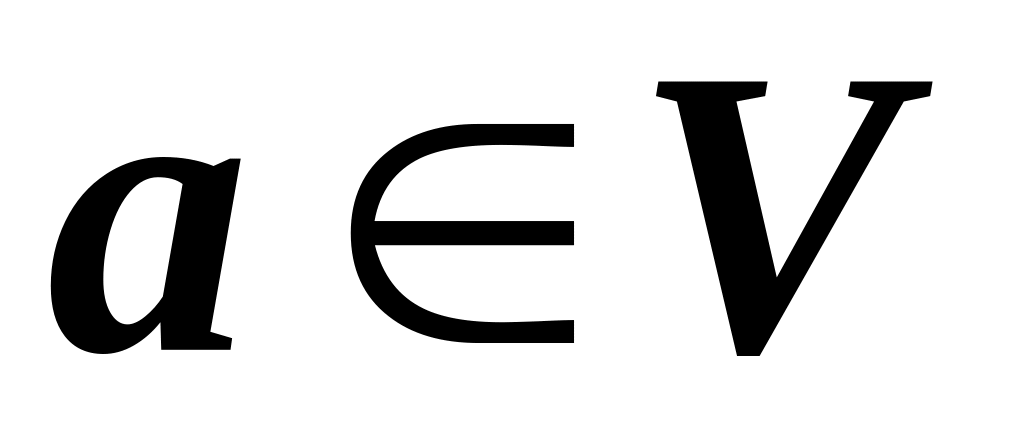 ;
it is easy to prove that zero element is unique.
;
it is easy to prove that zero element is unique.For every there exists the opposite element
 ,
such that
,
such that
 ;
it is easy to prove that the opposite element is unique.
;
it is easy to prove that the opposite element is unique.
 .
. .
. .
. .
.
From axioms
I–IV we can infer the existence and uniqueness of the difference
![]() ,
that is such an element, which satisfies the equation
,
that is such an element, which satisfies the equation
![]() .
.
Let us state some properties following from these axioms:
 .
. .
.If
 then
then
 or
or
 .
. .
. .
. .
. .
.
The definition given above is the definition of a real vector space, but if we use complex numbers instead of real numbers in the axioms, we obtain the definition of a complex vector space.
Here are some examples of vector spaces.
Space of vectors on a plane or in space. Recall that a vector in a plane is an ordered pair of real numbers, and a vector in space is an ordered triple of real numbers. Thus, all axioms are true.
The set of all sequences. A sequence is a function defined on the set of natural numbers, usually denoted by
 ,
where
,
where
 is the image of 1,
is the image of 1,
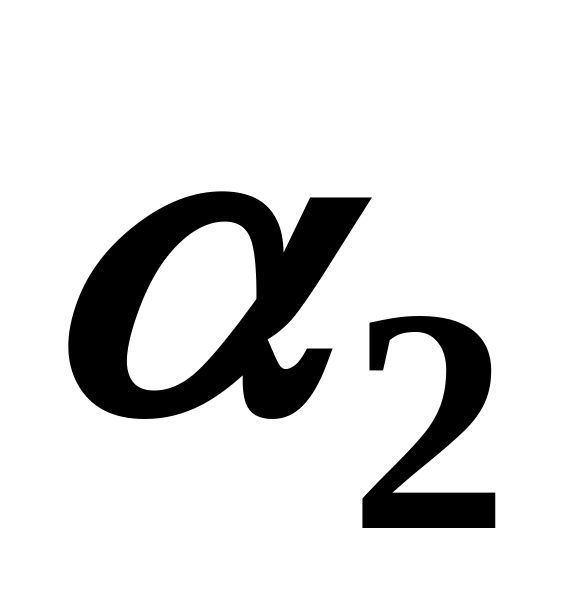 is the image of 2,
etc. Adding and scalar multiplication are defined as follows.
is the image of 2,
etc. Adding and scalar multiplication are defined as follows.
![]() +
+![]() =
=![]() ,
,
![]() .
.
It is easy to notice that all axioms are true.
The set of all polynomials of order less or equal than n, denoted by
 .
All axioms follow from the properties of polynomials.
.
All axioms follow from the properties of polynomials.The set of infinitely continuously differentiable functions on the segment
 ,
denoted by
,
denoted by
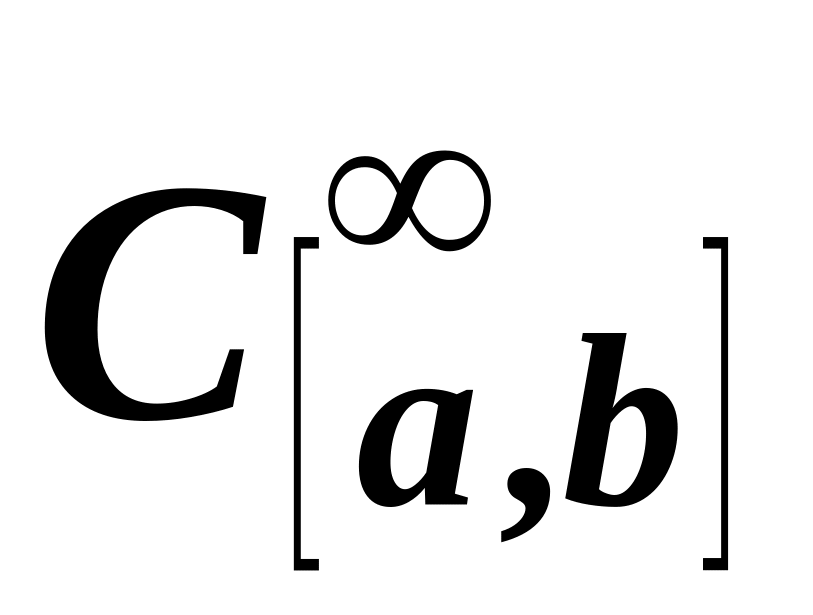 .
All axioms follow from the properties of continuous functions.
.
All axioms follow from the properties of continuous functions.
Linear independence and basis.
The linear independence of vectors in linear space is defined exactly as in a plane or a space.
The linear
combination
of vectors
![]() with coefficients
with coefficients
![]() is called a vector of the form
is called a vector of the form
![]() ,
,
if this series converges.
A linear combination is called trivial, if all coefficients are equal to zero, and is called non trivial in the opposite case. Trivial linear combination of vectors is obviously equal to zero.
The system of vectors is called linear independent if their linear combination is equal to zero only if it is trivial. The system is called linear dependent in the opposite case.
The set of
all linear combinations of vectors in the system
is
called the linear
span
of the system of vectors
![]() ,
and denoted as
,
and denoted as
![]() .
Let a linear space L
and a system
be given, if
.
Let a linear space L
and a system
be given, if
![]() ,
then the system
is called full.
A full linear independent system in the linear space L
is called the basis
of the linear space. A basis is usually denoted by
,
then the system
is called full.
A full linear independent system in the linear space L
is called the basis
of the linear space. A basis is usually denoted by
![]() .
If a vector can be represented as
.
If a vector can be represented as
![]() then this representation is unique and
then this representation is unique and
![]() are called the components of the vector a
in the basis
are called the components of the vector a
in the basis
![]() .
All bases of a linear space consist of equal number of vectors. The
number of vectors in the basis is called the dimension
of the linear space L,
denoted by
.
All bases of a linear space consist of equal number of vectors. The
number of vectors in the basis is called the dimension
of the linear space L,
denoted by
![]() .
If it is a finite number the vector space is called
finite-dimensional
linear space, and infinite-dimensional
in the opposite case.
.
If it is a finite number the vector space is called
finite-dimensional
linear space, and infinite-dimensional
in the opposite case.
Now, let us consider examples mentioned above.
Vector spaces in a plane or space. Since every vector in space is an ordered triple of real numbers
 ,
then it can be represented as
,
then it can be represented as
 .
Thus,
.
Thus,
 is a basis in this linear space, and its dimension equals 3,
and this space is finite-dimensional.
is a basis in this linear space, and its dimension equals 3,
and this space is finite-dimensional.The set of sequences. Every sequence can be represented as a linear combinations of the following sequences.
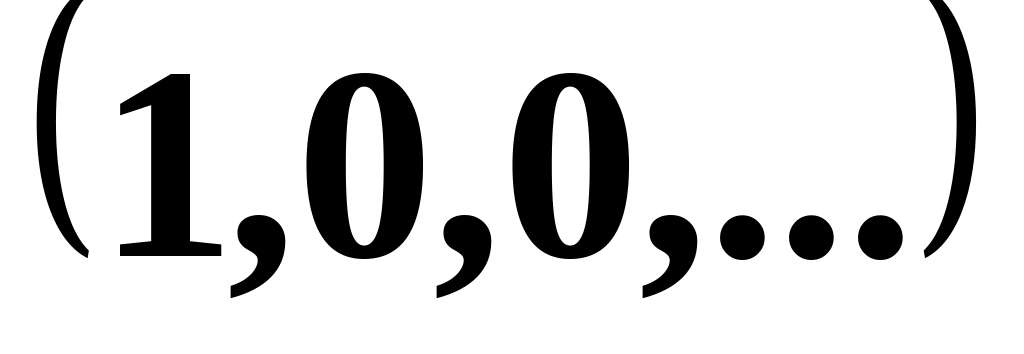 ,
, etc. For example:
etc. For example:
 .
Thus, this system is a basis and the linear space is
infinite-dimensional, because the number of such sequences is
infinite.
.
Thus, this system is a basis and the linear space is
infinite-dimensional, because the number of such sequences is
infinite.The set of polynomials of order less or equal than n. Every polynomial can be represented as
 ,
and the system
,
and the system
 is a basis of this linear space and
is a basis of this linear space and
 .
.
Let us
consider a finite-dimensional linear space L,
and let
![]() and
and
![]() be two bases of L.
Every vector in the second basis, like every vector in L,
can be represented as a linear combination of the first basis
be two bases of L.
Every vector in the second basis, like every vector in L,
can be represented as a linear combination of the first basis
![]() .
The matrix
.
The matrix
 ,
,
the rows of which are the components of in the basis , is called the transition matrix from basis to the basis . This can be written as
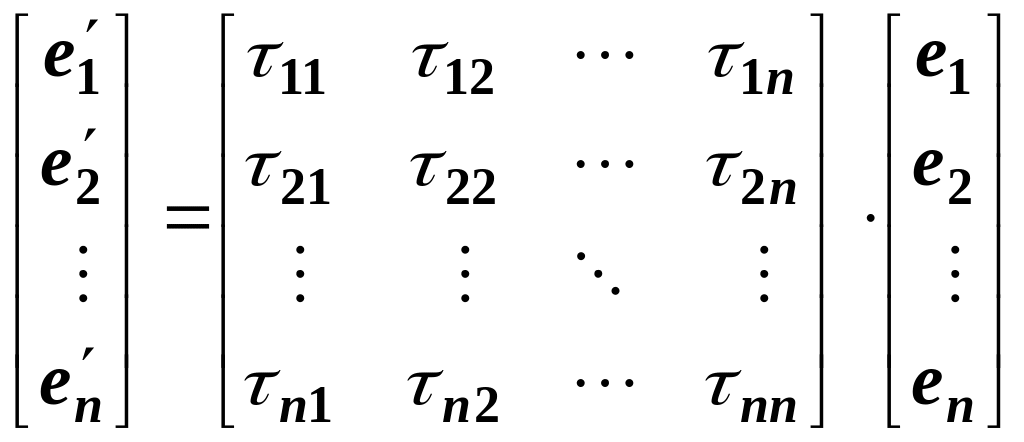 ,
,
or if we
denote the two bases written as a column by
![]() and
and
![]() ,
then
,
then
![]() .
From the other hand, if
.
From the other hand, if
![]() is the transition matrix from
to
,
then
is the transition matrix from
to
,
then
![]() .
Hence,
.
Hence,
![]() and
and
![]() .
.
Thus, on
account of linear independence of
and
![]() ,
and
,
and
![]() .
This states that the transition matrix is an invertible matrix. And
the converse, every invertible matrix is a transition matrix from a
basis to another basis.
.
This states that the transition matrix is an invertible matrix. And
the converse, every invertible matrix is a transition matrix from a
basis to another basis.
